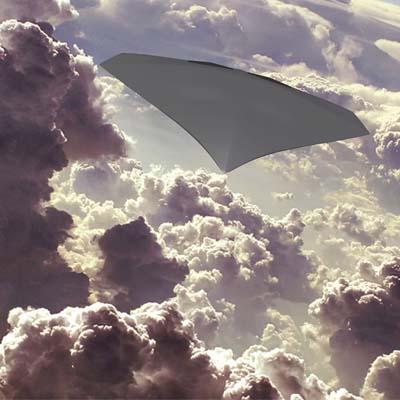Since 2012, aircraft operators have been required to comply with the European emissions trading scheme. This has a direct impact on bottom line as there are financial penalties or the need to procure allowances if emission targets are likely to be exceeded.
The two main ways to lower emissions are decreasing the overall fuel burnt by reducing aircraft weight or increasing engine efficiency by running at higher temperatures. Fuel costs are the largest operating expense for an airline so there is an additional economic driver for reducing use. From an airframe perspective, the priority is lightweight yet high strength. Materials used in engines need to be capable of operating at very high temperatures over 1,300°C. Both pose challenges for manufacturers as they seek alternatives to traditional materials used in aircraft.
We link fundamental materials research with aerospace manufacturing to develop novel technologies and improve existing technology performance. Current areas of research include:
-
Composite Materials – low cost manufacturing processes for advanced composite structures; research in materials science of polymer composites focused on improving the mechanical performance of polymer matrix composites; process modelling to optimise composite performance.
-
Metallic Materials – lightweight metallic structures; metal matrix composites; titanium alloys and intermetallics; coatings to protect titanium intermetallic alloys.
-
Welding and Joining - additive manufacture, laser processing, residual stress control, aluminium welding.
-
Coatings Technology – metallic and intermetallic corrosion protection coatings; environmental barriers; ceramics and cermets; polymeric coatings, including paint; wear protection; sensor coating materials, optical thin films, thin film ionic conductors, including conducting layers on plastics.
-
High Temperature Surface Engineering – coatings resistant to oxidation and hot corrosion; thermal barrier coatings; designing, testing and analysing coatings/surface treatments, especially for components subjected to extreme and hostile environments.
-
Damage Tolerance - bonded crack retarders; fatigue and fracture; fault detection and monitoring; through-life engineering.
Our research partners include projects for Defence Science and Technology Laboratory (DSTL), Engineering Physical Sciences Research Council (EPSRC), North Atlantic Treaty Organisation (NATO) and Innovate UK.
Our business clients include Airbus, AugustaWestland, BAE Systems, Boeing, EADS, Astrium, GKN Aerospace, Marshall Aerospace, MTU Aero Engines, Rolls Royce and Siemens.
We work with a number of supply chain companies with interests related to aerospace for instance monitor coatings, diffusion alloys and indestructible paints. Companies include Praxair, Teer Coatings Ltd, Oerlikon Balzers and Turbomeca.
About our research
Our greatest strength is the ability to combine the academic rigour and long-term perspective of a university with the commercial and business focus of industry.
Our excellence in strategic and applied research has enabled us to make significant contributions to the world around us for over 60 years. We address real life challenges and focus on research that is of strategic and practical importance.
We provide a supportive research community for students and our academic work is regularly published in journal article, book or thesis form.
Working with us
We work with clients and partners to understand the characteristics of materials. We are able to develop new materials, measure mechanical properties, look at their behaviour and their performance under oxidation and corrosion. This enables us to advise on material selection for prescribed conditions or help troubleshoot problems with existing material choice. We can also help with certification of materials for airworthiness approval. We are actively involved in devising standards from our involvement with national standards organisations, including the National Physical Laboratory.
We take a through-life approach to look at how these characteristics might change whilst in service and how the life cycle might be extended.
Our scientific and technical expertise is teamed with a deep understanding of how business operates and the challenges our clients face. We appreciate that these challenges might be multi-disciplinary and are able to draw on expertise from other areas of aerospace to provide appropriate solutions.
We provide a number of short courses in areas such as how to machine surfaces to high precision, joining of metals and polymers or new materials for the future.
Our facilities
An extensive range of facilities underpins our work in materials for aerospace applications testing areas such as erosion, oxidisation, and corrosion.
Our composites manufacturing facilities include an autoclave and RTM injection facilities for pre-preg and liquid composite moulding manufacture. Automated equipment extends our capabilities in relation to pre-preg tape laying and vacuum forming of composite parts.
We have facilities and equipment for Physical Vapour Deposition (PVD), Chemical Vapour Deposition (CVD) coating and Low Vacuum Plasma Spray (LVPS) coating of high temperature components. We have the only university facilities in Europe to deposit Electron Beam Physical Vapour Deposition (EBPVD) thermal barrier coatings onto blades, and the most comprehensive high-temperature coating test facilities within a university worldwide.
Our Materials Characterisation Laboratory is well-equipped to support industrially orientated research in materials science, and offers a wide range of specialist equipment for fabricating and characterising materials and devices at both the micrometer and nanometer scale.
State-of-the-art ultra precision, micro engineering and advanced coating laboratories, offer uniquely accurate capabilities in diamond machining, micro milling, micro moulding and surface metrology, supported by highly accurate temperature control.

